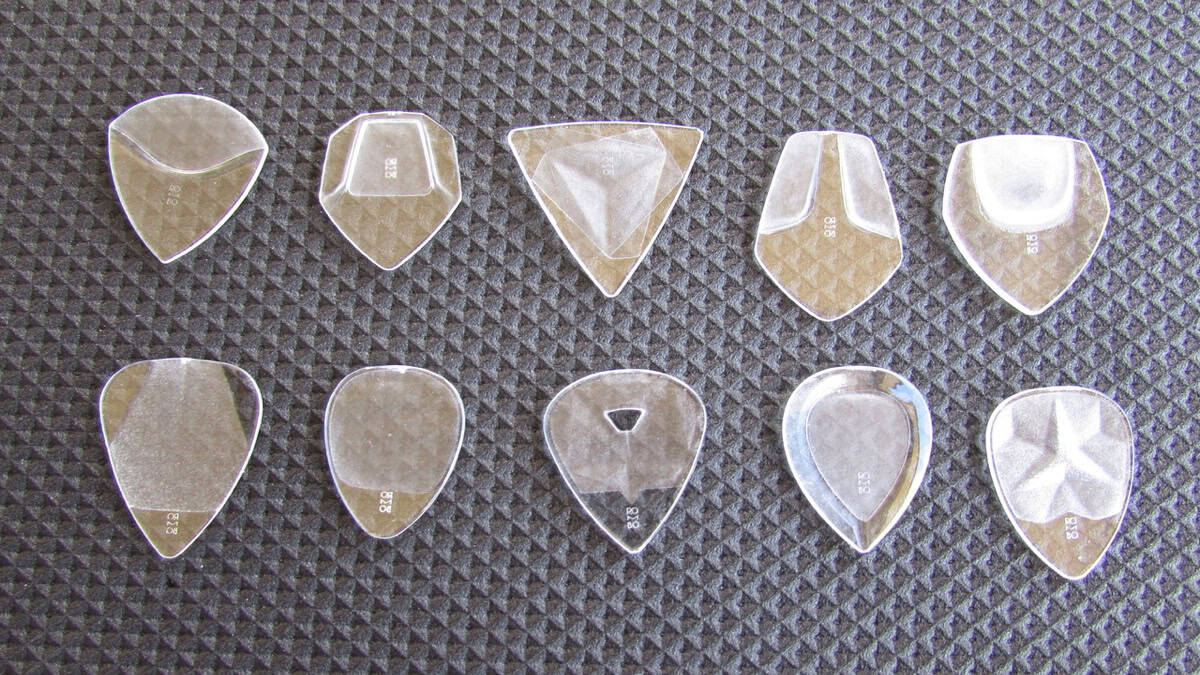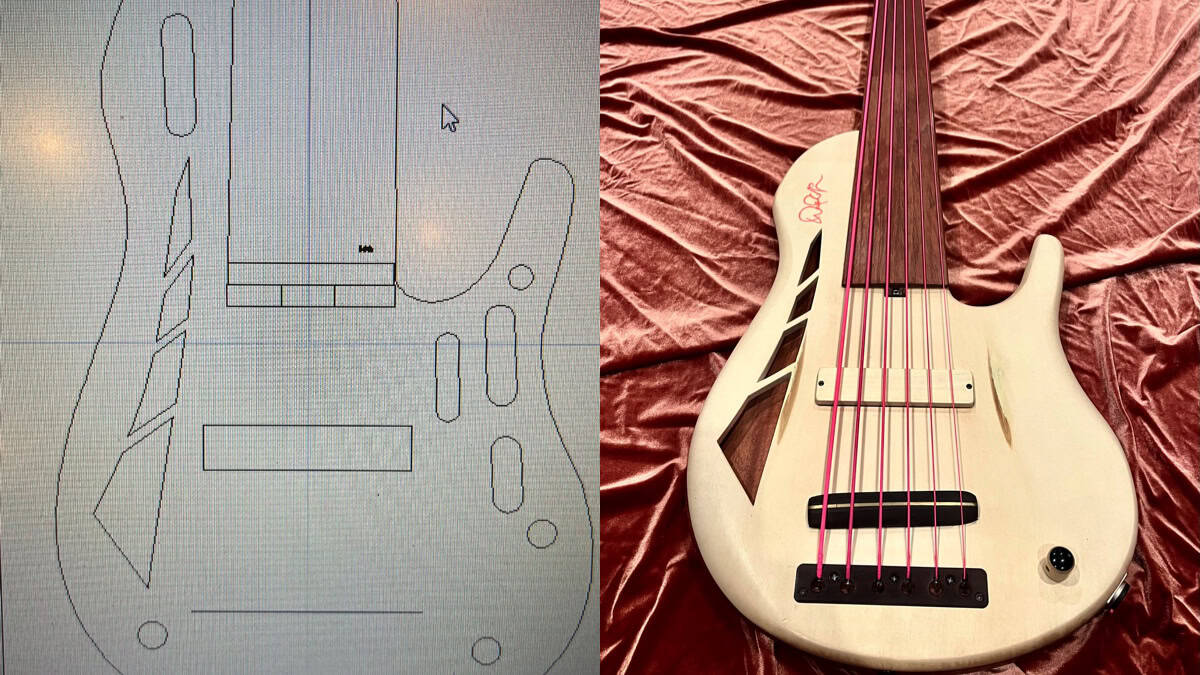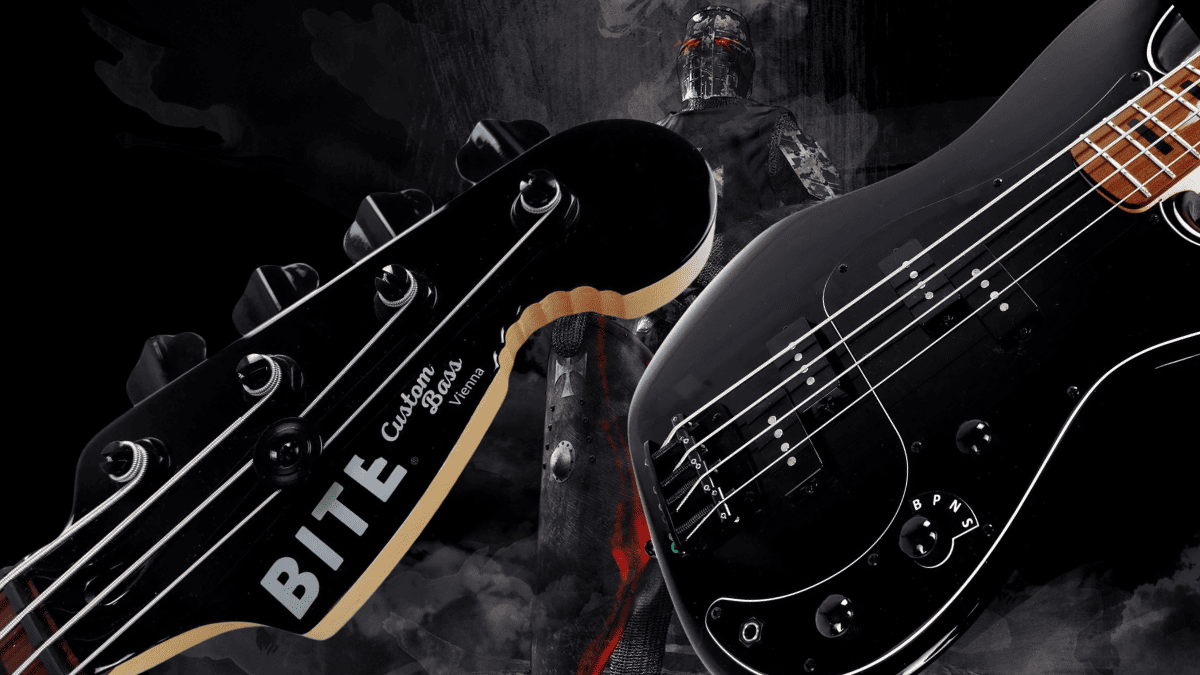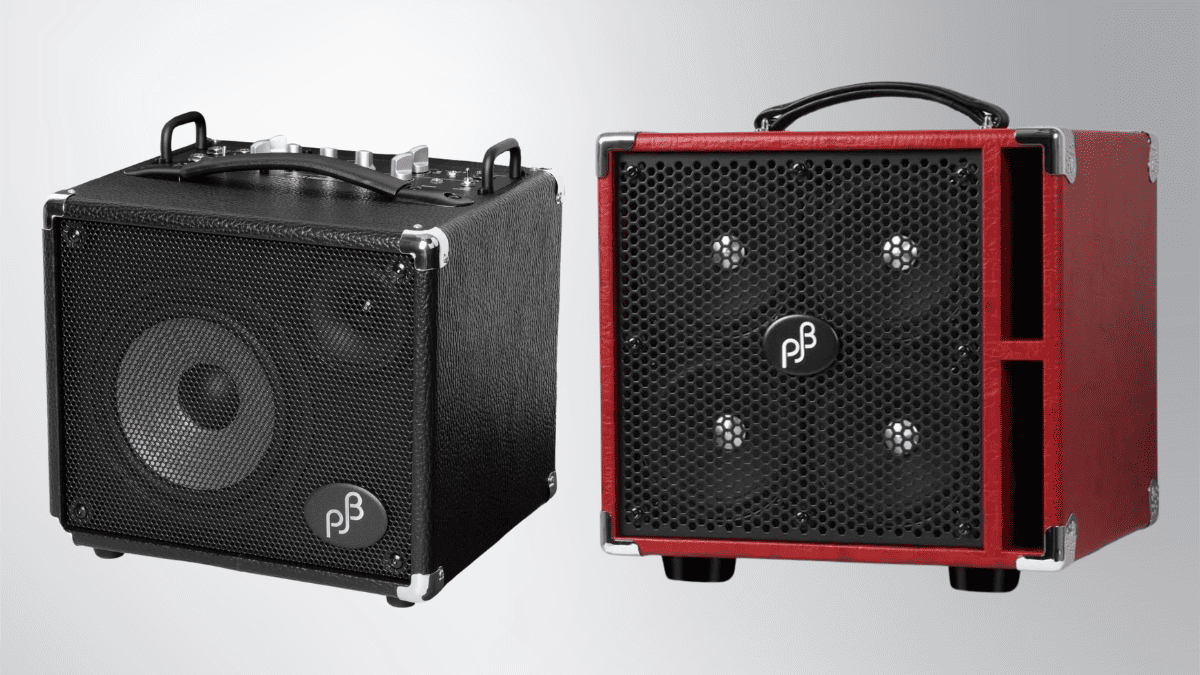Gear Reviews
Review: Empress Buffer+

Empress Buffer+ Review…
Buffer pedals: What do they do exactly, and do you need one in your rig? I wanted to explore this subject because it seems like passive P and J style basses still rule the day and are more in fashion than in recent memory, and also because it seems like pedalboards of varying size and complexity are becoming the norm for working bass players. When you play a passive instrument through a series of bypassed effects pedals (or a long instrument cable, for that matter), the relatively weak or ‘high impedance’ signal loses a little bit of its oomph with each foot of cable, each connector, and each bypassed electronic component it passes through on its way to your amp, due to capacitance. Whether you’re an effects junkie, a tonal purist, or an IEM user lovingly crafting a great amp tone with pedal-based amp modeling effects, you can think of a buffer as a “conditioner” for your passive signal- something that preserves the full dynamic range and tonal integrity of your basses. Whether a buffer pedal will benefit your setup comes down to 3 basic questions: Do you play passive basses; Do you use pedals; and/or do you use long (15-20’) instrument cables? A buffer at the front of your pedalboard ensures that your pristine passive tone will be preserved through all those components and arrive at your amplifier as Leo Fender intended it. Similarly, if you play a passive bass with no effects and a 20’ cable, you’re probably losing a bit of your signal due to the capacitance in the long cable, and a shorter cable to a buffer (then a long cable to your amp) will ensure that your bass tone stays strong, clean, and full range.
Enter the all-analog Buffer+ from Empress Effects, which is designed to be a “complete I/O interface for your pedalboard, while maintaining the highest fidelity to your guitar’s signal”.
The Empress Buffer+ is a well-thought-out solution for players who want to retain the purity of tone they get from plugging their axe straight into their amp while using their pedal setups.
If you play an active bass, which by nature has a lower impedance (hotter) signal, you may not get as much benefit from an active buffer stage, but a pedal like the Buffer+ can have other advantages.
The Buffer+ is robustly built, as are all Empress products, and its well-thought-out features and form factor make a lot of sense. Both the input and output jacks are located on the right side to serve as a nice tidy “patch bay” for your cable comings and goings from your board. The “Input Loading” mini pot fine-tunes the “load” placed on the pickups. Fully clockwise yields the cleanest fullest sound, and things get a little less bright and full range as you dial it back from there if you want to tone things down a touch. There is a +3/0/-3 dB Input pad switch that can even out signal levels between different instruments or set the right amount of volume to optimally interface with your effects. A selectable noise filter cuts any hiss that may be generated from the pedals in your chain. On the left side of the pedal are the Send and Return jacks for your FX loop. There is a buffer stage at the input of the pedal, as well as following the Return jack, to ensure that your signal gets preserved going into the effects loop and coming out of it. The Buffer + offers up to 30dB of gain, post FX loop, courtesy of the soft switch footswitch. A tuner output is located above the Send and Return jacks. Holding the footswitch down for 1 second engages a silent mute function.
There is another cool use for the Buffer+, as a “1 in, 3 out” splitter box. If nothing is plugged into the Loop In jack, the pedal will generate 3 full bandwidth outputs (Amp Out, Loop Out, Tuner Out) which can be mighty handy for signal routing in some stage and studio setups.
All in all, the Buffer+ is another in a long line of winners from Empress and may be an excellent solution for tone preservation, cable management, boost, and noise suppression.
As pedal-loving tone nerds like me can attest to, the drag with running a sweet board is that it can sometimes result in losing a little bit of clarity and life, compared to plugging your bass directly into your amp. The Empress Buffer+ can help mitigate those losses in tone and keep your sound full and punchy. For all the work you go through to make your bass sound great, you want to make sure you’re not losing clarity, richness, and detail.
The Buffer+ retails for $149, and they offer a stripped-down version of the Buffer without boost, input loading, noise filter, or input pad for $99. If you’re running a passive P or J bass and some pedals, and still want your bass to sound great, you might want to look into what the Buffer+ can do for your setup.
For more information, visit online at empresseffects.com/products/buffer-1
Bass Videos
Review: CrystalBright Rombo Picks

CrystalBright Rombo Picks
PR SamplePlaying bass with a pick is still a touchy subject in our community. I believe you should be able to use whatever you need to get your sound. Even though I mostly play with my fingers, I like to check out innovative new picks that might have something new to offer, sonically speaking.
Judith and Carlos from Rombo recently contacted me about a new material called CrystalBright that they have been researching for the last 12 months and offered to send some prototype picks. After trying them out, I put together this video with my findings.
For more info check out @rombopicks
Gear
New Joe Dart Bass From Sterling By Music Man

Sterling by Music Man introduces the Joe Dart Artist Series Bass (“Joe Dart”), named after and designed in collaboration with the celebrated Vulfpeck bassist.
Above photo credit: JORDAN THIBEAUX
This highly-anticipated model marks the debut of the Dart bass in the Sterling by Music Man lineup, paying homage to the Ernie Ball Music Man original that all funk players know and love. The bass embodies many of the original model’s distinctive features, from its iconic minimalist design to the passive electronics.

The design process prioritized reliability, playability, and accessibility at the forefront. Constructed from the timeless Sterling body, the Dart features a slightly smaller neck profile, offering a clean tone within a comfortable package. The body is crafted from soft maple wood for clarity and warmth while the natural finish emphasizes the simple yet unique look.
Engineered for straightforward performance, this passive bass features a ceramic humbucking bridge pickup and a single ‘toaster’ knob for volume control. Reliable with a classic tone, it’s perfect for playing in the pocket. The Dart is strung with the all-new Ernie Ball Stainless Steel Flatwound Electric Bass Strings for the smoothest feel and a mellow sound.

The Sterling by Music Man Joe Dart Bass is a special “Timed Edition” release, exclusively available for order on the Sterling by Music Man website for just one month. Each bass is made to order, with the window closing on May 31st and shipping starting in November. A dedicated countdown timer will indicate the remaining time for purchase on the product page. Additionally, the back of the headstock will be marked with a “2024 Crop” stamp to commemorate the harvest year for this special, one-of-a-kind release.
The Joe Dart Bass is priced at $399.99 (MAP) and can be ordered globally at https://sterlingbymusicman.com/products/joe-dart.
To learn more about Joe Dart, visit the official Vulfpeck artist site here https://www.vulfpeck.com/.
Gear Reviews
The Frank Brocklehurst 6-String Fretless Bass Build

A few months ago, my Ken Bebensee 6-string fretted bass needed some TLC. You know, the one rocking those Pink Neon strings! I scoured my Connecticut neighborhood for a top-notch luthier and got pointed to Frank Brocklehurst, F Brock Music. He swung by my place, scooped up the bass, and boom, returned it the next day, good as new. Not only that, he showed up with a custom 5-string fretted bass that blew me away. I couldn’t resist asking if he could whip up a 6-string fretless for me.
Alright, let’s break down the process here. We’ve got our raw materials: Mahogany, Maple, and Holly. Fun fact – the Mahogany and Maple have been chilling in the wood vault for a solid 13 years. Frank is serious about his wood; they buy it, stash it away, and keep an eye on it to make sure it’s stable.
First up, they’re tackling the Mahogany. Frank glues it together, then lets it sit for a few days to let everything settle and the glue to fully dry. After that, it’s onto the thickness planer and sander to get it nice and flat for the CNC machine. The CNC machine’s the real star here – it’s gonna carve out the body chambers and volume control cavity like a pro.
While the Mahogany’s doing its thing, Frank goes onto the neck core. Three pieces of quartersawn maple are coming together for this bad boy. Quartersawn means the grain’s going vertical. He is also sneaking in some graphite rods under the fingerboard for stability and to avoid any dead spots. The truss rod is going to be two-way adjustable, and the CNC machine’s doing its magic to make sure everything’s just right.
Now, onto the design phase. Frank uses CAD software to plan out the body shape, neck pocket, chambering, and those cool f-holes. I had this idea for trapezoid F-holes, just to do something different. The CAD software also helps us map out the neck shape, graphite channels, and truss-rod channel with pinpoint accuracy.

Once everything’s planned out, it’s CNC time again. Frank cuts out the body outline, neck pocket, and the trapezoid F-holes. Then it’s a mix of hand sanding and power tools to get that neck just how we like it. Oh, and those f holes? We’re going for trapezoids of different sizes – gotta keep things interesting.
Next step: gluing that neck into the pocket with some old-school hide glue. It’s got great tonal transfer and can be taken apart later if needed. Then it’s onto hand-carving that neck-body transition.
For the custom-made bridge, Frank uses brass for definition and Ebony for tonal transfer and that warm, woody sound.
BTW, for tunes, Frank went with Hipshot Ultralights with a D Tuner on the low B. This way I can drop to a low A which is a wonderful tone particularly if you are doing any demolition around your house!
Now it’s time for the side dots. Typically, on most basses, these dots sit right in the middle of the frets. But with this bass, they’re placed around the 1st, 3rd, 5th, 7th, 9th, and 12th frets.
Frank’s got his pickup hookup. Since the pickup he was building wasn’t ready, he popped in a Nordstrand blade to give it a whirl.
It sounded good, but I was itching for that single-coil vibe! And speaking of pickups, Frank showed me the Holly cover he was cutting to match, along with all the pink wire – talk about attention to detail!
A couple of things, while it is important for me to go passive, it is equally important for me to just go with a volume knob. Tone knobs are really just low-pass filters and the less in the way of a pure sound for me, the better.
Finally, it’s string time! As usual, I went for the DR Pink Neon strings. Hey, I even have matching pink Cons…Both low tops and high!
Once we’ve got everything tuned up and settled, we’ll give it a day or two and then tweak that truss rod as needed. And voila, we’ve got ourselves a custom-made bass ready to rock and roll.
I want to thank Frank Brocklehurst for creating this 6 string beast for me.
Gear Reviews
Review Transcript: BITE Custom Bass – The Black Knight PP Bass

This is a written transcript of our video review of the BITE Custom Bass Black Knight PP Bass originally published on March 4, 2024
BITE Custom Bass – The Black Knight PP Bass Review…
Bass Musician Magazine did a review on a Steampunk bass from BITE Guitars about three years ago, it was an amazing instrument, and we were very impressed. Now we’re happy to bring you another BITE bass, the Black Knight PP.
Everybody needs a P-type bass, it’s the standard of bass. If you’re recording, they want you to have a P bass. So why not have something that gives you a little more by having two instead of one P pickup. That’s the idea of this bass, it’s the first thing that leaps out: the double P pickup configuration.
Installing two of their 1000 millivolt split-coil pickups, BITE then went one step further and wired them up in a 4-way parallel/series circuit, a look at the controls reveal a 4-way rotary selector:
The first position, marked “B”, gives you the bridge pickup by itself.
The second position, marked “P”, gives you the bridge and neck pickups in parallel mode, that’s the traditional J-type circuit, it reduces output due to the physical law of parallel circuits.
Position number 3 is marked “N”, it gives you the neck pickup by itself.
And finally, number 4, marked “S”, gives your bridge and neck in a series (humbucking) mode which adds up resistances and thus boosts output. The other two controls are master volume and master tone.
What’s more, like every BITE bass, this one also has a reinforced headstock heel designed to give it extra output and sustain. The BITE website features a graph and explanation of what they have done to the heel, as compared to traditional headstocks.
A look at the body reveals a beautiful Black Blast body finish and underneath that we have alder wood. The bass has a matching headstock with a 4-in-line tuner setup and the traditional bite out of it, so everybody will know what kind of bass you’re playing. The pickguard is 3-ply black, the neck is vintage tinted hard maple and it has a satin speed finish at the back which keeps your thumb from sticking.
On top of that, there’s a clear-coated roasted black locust fretboard with black blocks marking the frets. The nut is a black Graph Tec nut, we’ve got diamond dome control knobs, and the tuners are lightweight compacts with cloverleaf buttons and a 1:17 ratio precision gear. The bridge is a Gotoh brass bridge with 19-millimeter string spacing.
Overall measurements: we’ve got a standard 34″ scale, a 1.65″ width nut and a C neck profile. This bass weighs 8.2 pounds, or 3,7 kilograms for our metric friends, and it uses standard 18% nickel silver frets.
Taking a closer look at the sound, this bass is a joy to play. The BITE proprietary 1000 millivolt pickups deliver an extraordinary amount of output which is surprising considering this is a passive instrument. You may even want to set your amp to active mode because of all of the juice you’re getting out of this guy.
The tonal possibilities are very versatile, it’s a straight P if you want but also much more with those different arrangements of the circuitry. So why have multiple basses when you’ve got one that can give you your basic P plus a lot more?
To sum it up, the Black Knight PP is an amazing instrument. The attention to detail that BITE puts into their basses is second to none. This bass is also amazingly balanced and gorgeous to hold and feel with the satin neck finish.
For more information, visit online at bite.guitars/product/black-knight-pp
Bass Videos
Reviews: Phil Jones Bass Compact Plus 450 and Bass Engine 17

Phil Jones Bass Compact Plus 450 and Bass Engine 17 Reviews…
In this issue, we take an in-depth look at two new amps from Phil Jones Bass, the Compact Plus 450 and Bass Engine 17.
For more information, visit online at pjbworld.com























